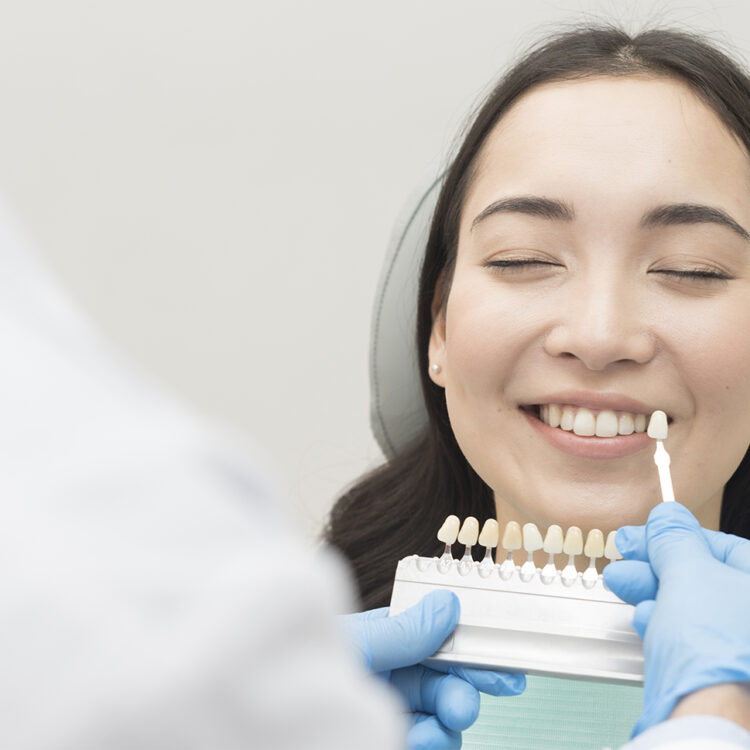A PICTURE PERFECT SMILE WITH
Veneers
Bonding and veneers make your teeth look better by changing their colour, shape or spacing. It is recommended that teeth be professionally bleached prior to the placement of veneers to achieve the best esthetic result.
Bonding
Bonding is a quick and painless way to repair chips in your teeth. Bonding uses a white plastic paste, called composite resin – a plastic that is semi-liquid at first, but that becomes hard and durable when cured with light.
This material can be tinted to match the colour of natural teeth and can also be contoured and shaped to resemble the missing part of a chipped tooth. It can be painted over a stained tooth, and it can make a fractured tooth look whole and perfect. Composite resin can even build up the size of teeth so gaps between them are reduced or eliminated.
Here’s how bonding is done:
Step 1
Your dentist puts a mild chemical on your tooth to make it a little rough. This step helps the composite resin stick better to the enamel of your tooth.
Step 2
The composite resin is mixed and tinted to match the colour of your natural teeth.
Step 3
Your dentist puts the composite resin on your tooth in layers.
Step 4
A very bright light is used to harden (or cure) each layer of resin as it is put on your tooth.
Step 5
After the last layer of composite resin is hardened (or cured), your dentist shapes and polishes the resin so the finished tooth looks natural and smooth.
Advantages:
* It’s painless. There’s usually only minor drilling involved, so there is no need for a local anesthetic.
* It doesn’t take much time. Several teeth can usually be veneered in one visit.
* It costs a lot less than veneers. Before direct veneering, crowns were the only way to improve the look of chipped, widely-spaced or discoloured teeth.
* It can be used on children, because bonded material can be removed and replaced as children’s teeth grow.
Disadvantages:
* Bonding treatment doesn’t last as long as crowns. It can last from 1-10 years depending on location and size, compared to up to 20 years for crowns.
* Some composite resins can be stained by tobacco, coffee, tea, blueberries, grape juice, cherries and red wine.
* If the seal between your tooth and the bonding material isn’t perfect, decay can occur under the composite resin.
Veneers
Veneers are very thin ceramic shells that are attached to the front part of teeth much like fake fingernails on nails. Like bonding, veneers can cover badly-stained teeth, chipped teeth, uneven teeth and large fillings.
Here’s how veneers are done:
Step 1
On your first visit, your dentist may give you freezing (called a local anesthetic). He/she then removes part of the enamel from your teeth to make room for the veneers. Your dentist makes a mold (or an impression) of your teeth. The impression is sent to a dental lab, where your veneers are custom-made.
Step 2
On the next visit, your dentist puts a mild chemical on your teeth to make them a little rough. This helps the veneers stick to your teeth better.
Step 3
The veneers are then attached to your teeth one by one, using composite resin cement.




SCHEDULE AN APPOINTMENT FOR A COMPLIMENTARY CONSULTATION.


